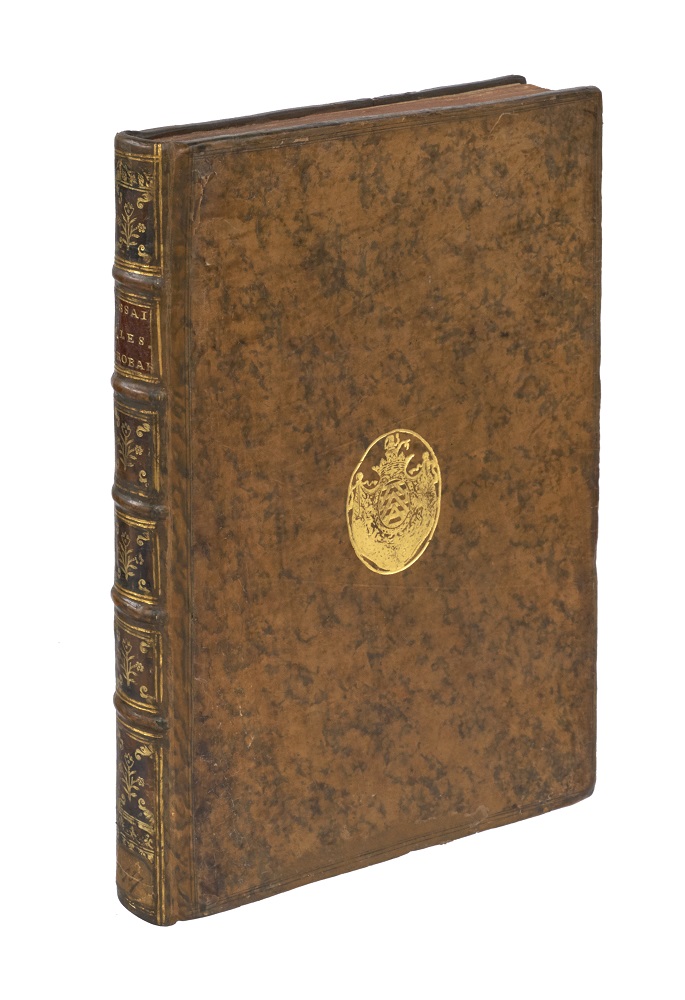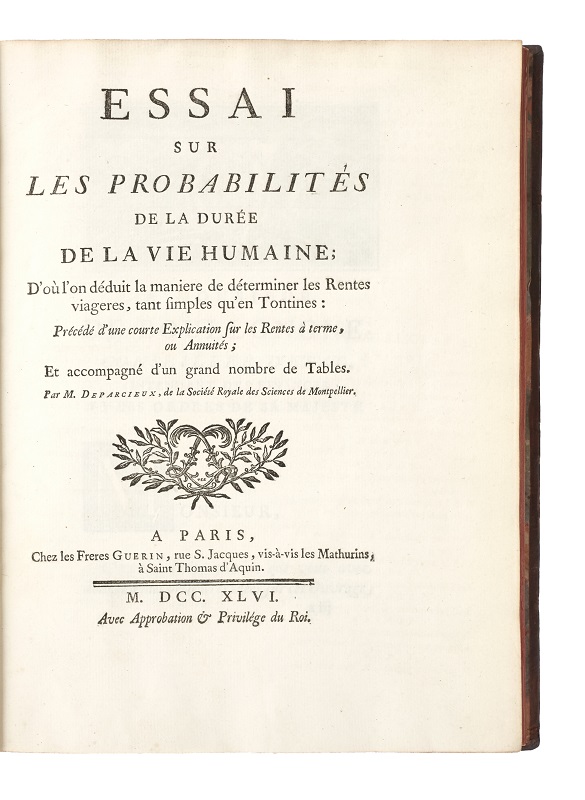

A CLASSIC OF STATISTICAL SCIENCE
DEPARCIEUX, Antoine.
Essai sur les probabilités de la durée de la vie humaine; d’où l’on déduit la manière de déterminer les rentes viagères, tant simples qu’en tontines: précédé d’une courte explication sur les rentes à terme, ou annuités; et accompagné d’un grand nombre de tables.
Paris, chez les frères Guerin, 1746.
4to, pp. vi, [2], 132, xxii (ix–xvi double-page), [1 (privilège du Roi)], [1 (blank)]; a very few marks; a fine copy in contemporary mottled calf, spine gilt in compartments and with gilt morocco lettering-piece, red edges, marbled endpapers; neatly rebacked preserving spine, corners repaired; from the library of Francois-Alexandre-Frédéric de La Rochefoucauld (1747–1827), with gilt arms (Olivier 710, fer 2) on covers and Bibliothèque de Liancourt bookplate on front pastedown; booklabel of Erwin Tomash.

Added to your basket:
Essai sur les probabilités de la durée de la vie humaine; d’où l’on déduit la manière de déterminer les rentes viagères, tant simples qu’en tontines: précédé d’une courte explication sur les rentes à terme, ou annuités; et accompagné d’un grand nombre de tables.
A large, crisp and illustrious copy of the first edition of a classic of statistical science: it is the first to define expectation of life – which Deparcieux calls ‘la vie moyenne’ – and the first to contain life tables for men and women.
‘The first French work in the actuarial field … After publication of this Essai, expectation of life came into general use as a descriptive statistic. Deparcieux scaled his mortality data to a radix of 1000 at age 3, calculated the survivors at every five years and interpolated the intermediate values … [His table] was espoused by the French life insurance companies and used almost until the end of the nineteenth century for premium calculations where payments were made on survival’ (History of Actuarial Science, ed. Steven Haberman and Trevor Sibbett, 1995, p. 243).
The distinguished scientist and mathematician Deparcieux (1703–1768) was represented by Voltaire as one of the speakers in l’Homme aux quarante écus.
Provenance:
From the library of the social reformer Francois-Alexandre-Frédéric de La Rochefoucauld (1747–1827), who established a model farm at Liancourt and a school of arts and crafts for the sons of soldiers (the École des Enfants de la Patrie), and who became one of the first promoters of vaccination in France. ‘On the 12th of July [1789], two days before the fall of the Bastille, he warned Louis XVI of the state of affairs in Paris, and met his exclamation that there was a revolt with the answer, “Non, sire, c’est une révolution”’ (Encyclopaedia Britannica).
Goldsmiths’ 9586; Institute of Actuaries, p. 41; Kress 4801; Tomash & Williams D41. Not in Einaudi or ‘Utrecht’.

